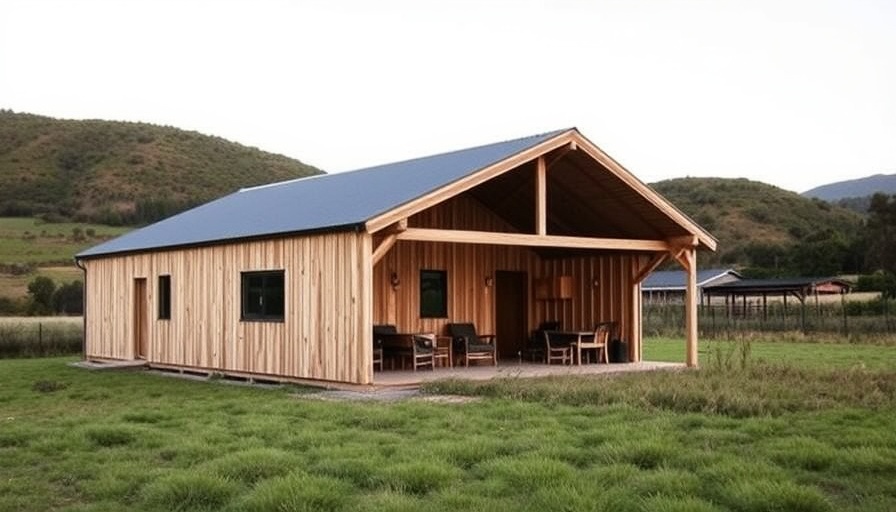
The Beauty of Unfussy Design in Openfield House
Located in the picturesque rural backdrop of New Zealand, the Openfield House designed by Keshaw McArthur encapsulates the philosophy of straightforward living through its "unfussy and honest" architecture. Inspired by nearby agricultural sheds, this home radiates simplicity and integrates harmoniously with its environment. The hefty, corrugated metal roof is not only a nod to traditional structures but also features a striking circular skylight that allows ample natural light to flood the interior.
Connect with Nature: The Importance of Open Spaces
Digital nomads, especially, can derive valuable insights from the Openfield House’s emphasis on connection to nature. By incorporating sliding external walls into their design, the architects provided the ability to transform spaces based on needs, allowing homeowners to interact with surroundings like never before. This fluidity in interior design exemplifies how open spaces can enhance productivity and creativity—a crucial aspect for those working remotely.
A Home Built for Living: Functional Spaces That Inspire
The design’s core philosophy centers on the idea of a "curated dialogue between organic and inorganic" materials. The balance of concrete, metal, and timber throughout the majority of the house not only evokes a sense of stability but also reduces visual clutter. By creating functional institutional areas such as the dining space and kitchen, coupled with adequate privacy measures for bedrooms, the architects have tailored this residence to meet modern living needs seamlessly.
Maximizing Light and Comfort for a Better Workspace
Works from home often suffer from poor lighting and lack of distinct workspaces, but Openfield House solves this issue with its innovative skylight design. Thoughtfully positioned, this skylight frames distant mountain views while streaming daylight into the rooms. For those seeking to enhance their workspace ergonomics, having such natural light overlooked from overhead contributes significantly to both mood and efficiency, reducing the fatigue that often accompanies long hours of work.
Design Techniques That You Can Implement Today
Creating an ideal remote workspace doesn't require major renovations; simple modifications can be implemented based on principles from architectural designs like Openfield House. Consider introducing elements such as:
- Natural Light: Positioning desks near windows or utilizing skylights can enhance focus.
- Sliding Walls: Use of mobile partitions can help in transforming spaces according to activity.
- Material Choices: Integrating natural materials can foster a calming atmosphere.
These techniques not only boost productivity but also improve overall well-being.
Conclusion: Embrace the Unfussy Approach
The architectural philosophies evident in the Openfield House serve as important reminders of how simplicity in design can elevate living and working conditions. Digital nomads should embrace such principles to cultivate comfortable and efficient workspaces that promote both productivity and well-being. Understanding the relationship between your workspace and its environment can set the stage for a healthier approach to remote work.
As you set up or adapt your workspace, think about ways to incorporate these elements and create an atmosphere conducive to success. Consider reaching out to ergonomic specialists for a tailored approach to your workspace, leading to a healthier and more productive remote working experience.
 Add Row
Add Row  Add
Add 




Write A Comment